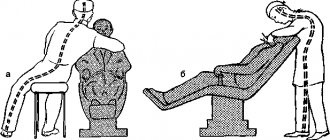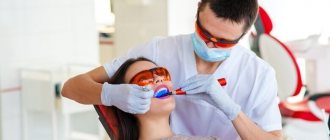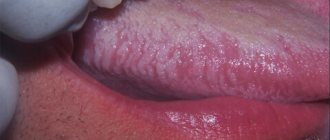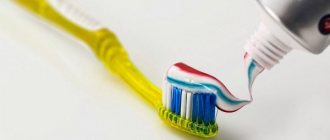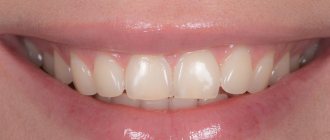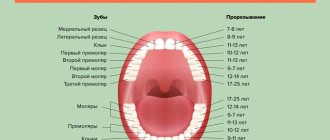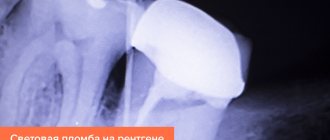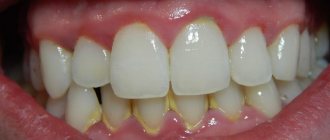Hepatitis C is a viral disease primarily transmitted through blood. Most often, infection occurs when using unsterile medical instruments. And since the disease itself is asymptomatic during the first months, in most cases it becomes chronic even before it is diagnosed.
Untreated hepatitis can lead to fibrosis, cirrhosis of the liver, joint damage, and decreased intellectual function and performance. It threatens to have especially serious consequences in combination with HIV.
Like HIV, the virus is also transmitted sexually, and although this method of infection is uncharacteristic for it, unlike the immunodeficiency virus, the hepatitis virus is much more resistant to the external environment. In a sense, hepatitis C is a survival champion: in dried blood at room temperature, the virus remains viable for up to 16 hours (HIV dies almost instantly in such conditions). And the destruction of the hepatitis C virus is achieved only by sterilization.
If in the late 90s in Russia the spread of hepatitis was directly correlated with intravenous drug use, today the epidemiological picture is completely different: the virus is found in 3-4% of the population, including young children.
Moreover, the likelihood of becoming infected with hepatitis, even if you do not inject drugs, do not have unprotected sex, or have not had a blood transfusion, still remains very high. And one of the places where you can become infected with hepatitis is the dentist's office.
Sterility for materials and instruments
Most dental supplies are disposable and supplied in individual sealed packages. These are masks, gloves, napkins, brushes and applicators for applying varnishes and gels, tablets on which pastes are mixed, elements of saliva ejectors, etc.
Reusable instruments and materials undergo special treatment after each patient. It is performed in several stages:
- disinfection - soaking in solution for 2 hours;
- mechanical cleaning;
- washing (ultrasound can be used to remove all contaminants);
- washing in distilled water;
- drying;
- packaging in disposable sealed bags;
- dry heat or steam treatment (at high temperature).
After the sterilizer, the instrument remains in individual packaging, which is opened only before use in the presence of the patient.
Sanitary standards allow the use of conventional autoclaves in dental offices. In such equipment, superheated steam is supplied under pressure to sterilize accessories. The method is effective, but it does not always completely clean the pores on the surface of the instruments (if any). To increase the reliability of processing, dry heat sterilization is used, the temperature at which is so high that all microorganisms die. Another option is the use of automated autoclaves, with control of the operating protocol. To check the quality of cleaning, chemical indicators are additionally used - azopyram samples. If traces of biological material remain on surfaces, they show this. The results of such checks are recorded in a separate journal.
After sterilization and until use, reusable instruments are stored in special boxes with bactericidal irradiators. However, they are not removed from sealed bags.
HIV infection in dentistry. Issues of prevention.
Due to the continuing increase in the prevalence of HIV infection, the likelihood of a dentist encountering HIV-infected patients is constantly increasing. Many of these patients may have varying oral manifestations of the disease. Dental health workers cannot refuse to perform their professional duties to AIDS and HIV-infected patients. This will require dentists to know not only the symptoms of oral and periodontal disease, but also the basic principles of HIV prevention.
During dental procedures, damage to the oral mucosa and bleeding are inevitable. In this case, infection of medical instruments, casts, prostheses occurs, and aerosols containing blood and saliva may be dispersed when using high-speed dental units. At a dentist's appointment there may be patients who do not know or are hiding their disease, patients in the incubation stage, who can become a source of infection for other patients and for the staff of the medical institution.
Medical personnel in dental offices and departments belong to the occupational risk group. To prevent infection of personnel during dental procedures, the dentist must know the routes and factors involved in the transmission of HIV, and the provision of dental care must be carried out in compliance with the necessary precautions and with strict adherence to the rules of disinfection and sterilization of medical and dental instruments.
The most common malignant disease of the oral cavity is:
- Kaposi's sarcoma;
- Angular cheilitis caused by the fungus Candida albicans;
- Erythematous candidiasis;
- Pseudomembranous candidiasis;
- HIV gingivitis (linear gingival erythema);
- Necrotizing gingivitis and periodontitis;
- Herpetic ulcers due to HIV infection;
- "Hairy" leukoplakia;
- The wart is viral;
- Aphthous ulcerations;
- B-cell (non-Hodgkin) lymphoma.
HIV infection is a disease caused by the human immunodeficiency virus - an infectious chronic disease characterized by a specific lesion of the immune system, leading to its slow destruction until the formation of acquired immunodeficiency syndrome (AIDS), accompanied by the development of opportunistic infections and secondary malignant neoplasms. AIDS is a condition that develops against the background of HIV infection and is characterized by the appearance of one or more diseases classified as AIDS-indicative.
The source of HIV infection is people infected with HIV at any stage of the disease, including the incubation period. • Mechanism and factors of transmission. • HIV infection can be transmitted through both natural and artificial transmission mechanisms.
The natural mechanism of HIV transmission includes:
- • Contact, which occurs primarily during sexual intercourse (both homo- and heterosexual) and when the mucous or wound surface comes into contact with blood.
- • Vertical (infection of a child from an HIV-infected mother: during pregnancy, childbirth and breastfeeding.)
The artificial (artificial) transmission mechanism includes:
- • Artificial for non-medical invasive procedures , including:
- intravenous drug administration (use of syringes, needles, other injection equipment and materials),
- tattooing,
— when performing cosmetic, manicure and pedicure procedures using non-sterile instruments.
- • Artificial for invasive interventions in health care facilities:
- during transfusion of blood, its components,
- organ and tissue transplantation,
- use of donor sperm, donor breast milk from an HIV-infected donor,
— through medical instruments for parenteral interventions, medical products contaminated with HIV and not processed in accordance with the requirements of regulatory documents.
It can be said with absolute certainty that HIV is not transmitted by mosquitoes, mosquitoes, fleas, bees and wasps. HIV is not transmitted through casual contact. Not a single case of infection through saliva and tear fluid containing blood has been described. Since HIV is not transmitted through saliva, you cannot become infected by sharing glasses, forks, sandwiches or fruit. According to leading experts, contact with intact skin of infected biological fluids (for example, blood) is not enough to transmit the virus.
The main factors of pathogen transmission are human biological fluids:
- • blood,
- • blood components,
- • sperm,
- • vaginal discharge,
- • breast milk.
The main population groups at risk of contracting HIV infection are:
- • injection drug users (IDUs),
- • commercial sex workers (CSWs),
- • men who have sex with men (MSM).
The group at increased risk of contracting HIV includes: clients of sex workers, sexual partners of IDUs, medical workers, including dentists, prisoners, street children, people with a large number of sexual partners, migrating segments of the population (truck drivers, seasonal workers, including including foreign citizens working on a rotational basis and others)
The incubation period for HIV infection is the period from the moment of infection until the body’s response to the introduction of the virus (the appearance of clinical symptoms or the production of antibodies) is usually 2-3 weeks, but can last up to 3-8 months, sometimes up to 12 months. During this period, antibodies to HIV are not detected in the infected person, and therefore the risk of transmission of infection from him in nosocomial foci, including through transfusion of blood and its components, increases.
Stages of HIV infection:
- • acute phase (from 1-5 days to 6 months)
- • latent infection or subclinical stage (from 2 to 10 years)
- • stage of manifest manifestations (prev. AIDS and AIDS).
Acute HIV infection.
In 30-50% of infected people, symptoms of acute HIV infection appear, which is accompanied by various manifestations: fever, lymphadenopathy, erythematous maculopapular rash on the face, trunk, sometimes on the extremities, myalgia or arthralgia, diarrhea, headache, nausea and vomiting, enlarged liver and spleen , neurological symptoms. These symptoms vary in severity. In rare cases, severe secondary diseases may develop already at this stage, leading to the death of patients. During this period, the frequency of referrals of infected people to healthcare facilities increases; the risk of transmission of infection is high, due to the large amount of virus in the blood.
Subclinical stage.
The duration of the subclinical stage averages 5-7 years (from 2 to 10 years, sometimes more), there are no clinical manifestations other than lymphadenopathy. At this stage, in the absence of manifestations, the infected person remains a source of infection for a long time. During the subclinical period, HIV continues to multiply and the number of CD 4 lymphocytes in the blood decreases.
Stage of secondary diseases.
Against the background of increasing immunodeficiency, secondary diseases (infectious and oncological) appear. Initially, these are predominantly lesions of the skin and mucous membranes, then organ and generalized lesions, leading to the death of the patient. Namely: pulmonary tuberculosis extrapulmonary tuberculosis unmotivated weight loss (more than 10% in 6 months) Pneumocystis pneumonia recurrent severe radiologically confirmed pneumonia (2 or more episodes per year) CMV retinitis + colitis infection caused by the herpes simplex virus (chronic or persistent for 1 month or more) HIV-associated cardiopathy, HIV-associated nephropathy, encephalopathy, Kaposi's sarcoma and HIV-associated tumors. toxoplasmosis cryptosporidiosis cryptococcal meningitis progressive multifocal leukoencephalopathy. disseminated fungal infections, non-tuberculous mycobacterial infections or disseminated atypical mycobacteriosis
Laboratory diagnosis of HIV infection is based on the detection of antibodies to HIV and viral antigens. • The standard method for laboratory diagnosis of HIV infection is the determination of antibodies/antigens to HIV using ELISA. To confirm the results, confirmatory tests are used (immune, linear blot).
Diagnostic algorithm for testing for the presence of antibodies to HIV:
- • Stage 1 (screening laboratory).
- • Stage 2 (reference laboratory).
- • Stage 3 confirmatory test (immunoblot)
Stage 1 (screening laboratory).
If a positive result is obtained in the ELISA, the analysis is carried out sequentially 2 more times (with the same serum and in the same test system). If two positive results are obtained from three ELISA tests, the serum is considered primary positive and is sent to the reference laboratory (HIV Diagnostic Laboratory of the Center for Prevention and Control of AIDS) for further research.
Stage 2 (reference laboratory).
The initially positive serum is retested by ELISA in a second test system from another manufacturer, which differs from the first in the composition of antigens, antibodies or test format chosen for confirmation. If a negative result is obtained, the serum is retested in a third test system from another manufacturer, which differs from the first and second in the composition of antigens, antibodies or test format.
If a negative result is obtained (in the second and third test systems), a conclusion is issued about the absence of antibodies to HIV. If a positive result is obtained (in the second and/or third test system), stage 3 is carried out
Stage 3 confirmatory test (immunoblot) (search for antibodies to individual antigens of the core, shell, and enzymes of the virus).
Samples in which antibodies to 2 of 3 HIV glycoproteins (env, gag, pol) are detected are considered positive in the immunoblot. Sera are considered negative (negative) in which no antibodies are detected to any of the HIV antigens (proteins) or there is a weak reaction with protein p 18. Sera are considered undetermined (doubtful) in which antibodies to one HIV glycoprotein and/or any proteins are detected. HIV. If a negative and questionable result is obtained in an immune or line blot, it is recommended to examine the serum after 3, 6, 12 months.
One of the most important problems in HIV testing is the so-called diagnostic window period. This is the period that elapses from the moment of HIV infection until a detectable level of antibodies appears. As a rule, this is the incubation period (from the moment of infection to 6 months). • Taking into account this phenomenon, difficulties arise when examining donated blood from people who are in the mentioned period of HIV infection. Therefore, in most countries of the world, a system of using blood only after it has been stored for 3-6 months has been introduced in order to carry out mandatory re-examination for HIV infection of donors of these doses of blood and its components.
Testing for HIV infection is carried out voluntarily, except in cases where such testing is mandatory. The following are subject to mandatory medical examination for HIV infection: Donors of blood, blood plasma, and other biological fluids, tissues and organs each time donation material is taken; Doctors, paramedical and junior medical staff of centers for the prevention and control of AIDS Medical workers in surgical hospitals (departments) Persons undergoing military service and entering military educational institutions Foreign citizens and stateless persons when applying for a citizenship permit or permit residence.
All instruments and products that come into contact with the wound surface, blood or injectable drugs, as well as certain types of medical instruments that during operation come into contact with the mucous membrane and can cause damage to it are subjected to sterilization: dental instruments: tweezers, probes, spatulas, excavators, pluggers , smoothers, crown removers, skellers, dental mirrors, burs (including diamond-coated) for all types of tips, endodontic instruments, pins, dental discs, cutters, separating metal plates, matrix holders, trays for taking impressions, instruments for removing dental plaque , periodontal surgical instruments (curettes, hooks of various modifications, etc.), instruments for filling tooth canals (pluggers, spreaders), carpule syringes, various types of forceps and nippers for the orthodontic office, vacuum cleaners; ultrasonic handpieces and attachments for them, handpieces, removable micromotor sleeves for mechanical handpieces, cannulas for a dental plaque removal device; surgical instruments: dental forceps, curettage spoons, elevators, chisels, instrument sets for implantology, scalpels, forceps, scissors, clamps, surgical smoothers, suture needles; trays for sterile medical products, instruments for working with sterile material, including tweezers and containers for their storage.
Workplaces are provided with extracts from instructional and methodological documents, first aid kits for emergency prevention in emergency situations.
All medical instruments (as well as dishes, linen, devices, etc.) contaminated with blood, biological fluids, and also in contact with mucous membranes, immediately after use are subject to disinfection in accordance with the order of the Ministry of Health of the Republic of Belarus dated April 2, 1993 No. 66 “On measures to reduce the incidence of viral hepatitis in the Republic of Belarus” and other regulatory documents. Disinfection regimes are similar to those used for the prevention of infection with hepatitis B, C, D.
When carrying out manipulations associated with violating the integrity of the skin, mucous membranes, and also not excluding the splashing of biological fluids during autopsy of corpses, conducting laboratory tests, processing instruments, linen, cleaning, etc., medical workers and technical personnel must use personal protective equipment (surgical gown, mask, goggles or screen, waterproof apron, sleeves, gloves) to avoid contact of the patient’s blood, tissues, biological fluids with the skin and mucous membranes of the personnel. The approach to the use of protective clothing should be differentiated, taking into account the degree of risk of HIV infection.
Medical workers with injuries (wounds) on their hands, exudative skin lesions, and weeping dermatitis are excluded from medical care for patients and contact with care items for the duration of their illness.
Measures for wounds, contact with blood, and other biological materials of patients. Any damage to the skin, mucous membranes, or contamination of them with biological materials from patients during the provision of medical care should be qualified as possible contact with material containing HIV or another agent of an infectious disease.
If contact with blood or other liquids occurs with a violation of the integrity of the skin (injection, cut) , the victim must:
- remove gloves with the working surface facing inward;
- squeeze blood out of the wound;
- treat the damaged area with one of the disinfectants (70% alcohol, 5% tincture of iodine for cuts, 3% hydrogen peroxide solution for injections, etc.);
- wash your hands under running water and soap, and then wipe with 70% alcohol;
Orthopedic dentist, 1st category
Verevkin Dmitry Anatolievich
Treatment of dental offices
Cleaning regulations are determined by sanitary standards. All surfaces must be smooth, easy to clean, without microscopic pores or roughness. They are treated with disinfectants several times a day. Disinfection is carried out for furniture and equipment of walls, floors, ceilings, window sills, etc.
Dental offices must be equipped with special medical furniture. It is made from materials with surfaces that can withstand repeated disinfection and are free of micropores.
After each appointment, additional processing of all items touched by the doctor or patient is performed.
Some infections are transmitted by airborne droplets. To protect against them, dentistry can use bactericidal recirculating lamps (they continuously disinfect the air; they can operate in the presence of the patient), closed-cycle UV emitters, and special filters. A separate ventilation system is installed for surgical rooms. The air passes through fine filters. Access to the room must be through the sterilization department.
Vacuum of knowledge
However, this issue is regulated by written rules. Thus, the Decree of the Chief State Sanitary Doctor of the Russian Federation dated May 18, 2010 N 58 (as amended on June 10, 2016) “On approval of SanPiN 2.1.3.2630-10 “Sanitary and epidemiological requirements for organizations engaged in medical activities”” indicates that dental handpieces must be sterilized after each patient.
This is also evidenced by modern instructions on the correct and safe processing of dental handpieces. The Kemerovo correspondent for AIDS.CENTER conducted a small experiment: she specifically walked through the city’s dental offices to check how these documents work. It turned out that there was no way. When a woman sat down in a chair and asked uncomfortable questions, the answer, as a rule, in most places was the already familiar “We treated it,” which in practice often meant: they wiped the top twice with a cotton swab containing chloramine.
However, there is no need to panic. Professor of the Department of Infectious Diseases and Epidemiology of the Moscow State Medical University named after A. I. Evdokimov Irina Shestakova answers a question on our site that it is quite difficult to really assess the likelihood of such an infection. And the risk is not as great as it might seem at first glance.
Dental equipment
Water supply systems. They are used to cool the tooth tissue during preparation. The jet is supplied through the tip. This treatment can only be carried out with distilled water. The design of the units is such that liquid from the oral cavity cannot enter the line even with a constant change in pressure.
Tips. During treatment, they come into contact with tooth tissue and require especially thorough cleaning. It becomes more complicated because the tips may have hidden cavities in which bacteria accumulate. For high-quality cleaning, the tip is blown twice: to remove mechanical impurities and rinse it with a hot antiseptic solution. Only after this is it sterilized in a disposable sealed bag.
Other tools. Endodontic accessories, burs, and scaler tips are stored in closed containers after treatment. You can only remove them from there with disposable sterile tweezers.
Individual dental kits. They include masks, gloves, aprons, and caps for the doctor and assistant. Special bags are used for waste materials. The standard set includes tips for a vacuum cleaner and a saliva ejector. If anesthesia is performed, the carpule and needle are disposable.
The described sterilization and disinfection protocol is used at the DentoSpas clinic and complies with the AntiAIDS and AntiHepatitis program. It ensures the safety of the patient during a dental appointment and eliminates infection and infection.
Checked: no viruses
Reusable medical instruments, devices and accessories are subject to mechanical or manual disinfection (rinsing and soaking in special solutions) and subsequent sterilization. There are many guaranteed ways to secure your tools. Here are the most effective:
- Thermal. Essentially this is autoclaving, which destroys any microbes. Purification occurs through hot steam (134 degrees Celsius) and high pressure (about 4 atmospheres). Moreover, each individual set of tools is packed in a craft bag, which contains an indicator of the quality of processing. If the instruments are cleaned correctly, the indicator color on the bag will change.
- Airy. Hot air treatment. The microflora dies due to the burning of protein in the cells.
- Microwave. It takes no more than 30 seconds and reliably destroys germs using high temperature.
- Chemical. Disinfectants (broad-spectrum agents) are used in which the instruments are immersed.
- Gas. Of all gases, ozone destroys organic matter best and fastest. It oxidizes it, literally tearing the cells to shreds.
- Radiation. The most effective method. Destroys microbes at the molecular level by affecting surfaces with gamma rays.
The sterilization method is selected based on the needs and capabilities of the clinic; several methods are often used simultaneously.
To make sure that the measures used in the clinic are sufficient to ensure safety, you need to ask how, with what and how often surfaces are treated. You can also ask for a log of accounting and processing.
Article on the topic
Hands off! Where in the store is the biggest risk of contracting COVID-19?
"Such" clients
Things are no better in cosmetology. Our website conducted a survey of employees in this field, the results of which can be stated: there are no less prejudices here than in dentistry. Even if the salon has a medical license, and the reception is conducted by a qualified specialist with a diploma from the relevant higher educational institution.
Thus, a cosmetologist, a spectacular lady named Alsou, who works in one of the capital’s clinics, when asked by a correspondent whether it is possible to give beauty injections to people who test positive for HIV (especially with a zero, that is, undetectable viral load), reports bluntly: "No you can not". And when trying to clarify the reason, he answers as follows: “I would refuse such a client only because serving him is incorrect in relation to healthy people. I don't want to take on any more risk."
She does not agree that the possibility of infection from a patient undergoing therapy, subject to basic sanitation standards, is excluded. In her opinion, there should be separate rooms for “such people.” However, Georgy Lebedev, her colleague in the shop - a plastic surgeon, to whom we turned for comment, is ready to argue with the woman. “Now we need to discuss the question: should cosmetologists provide aesthetic medical care to patients with HIV infection? Personally, I don’t see any problem with providing rejuvenation services to these patients. These are exactly the same patients as everyone else,” he is convinced.
“I have been working successfully with patients who have HIV infection for a long time. To be honest, I absolutely do not single them out into any special group. The problem is the ignorance of some doctors, ignorance of what HIV infection is, where it comes from, how it appears and how it progresses,” the surgeon continues, recalling that the standard norms and rules mandatory for any medical organization are enough to exclude the possibility of transmission of the virus both from patient to patient and from patient to doctor, and with an undetectable load such transmission is physically impossible. The blood and fluids of a patient with an undetectable load simply do not contain the virus in the amount necessary for its transmission, since it has long been killed by the medications that the patient is forced to take daily throughout his life.
As the AIDS.CENTER website has repeatedly written, even unprotected sex with an HIV-positive partner if his load is undetectable is safe. This medical fact has been confirmed by a series of worldwide studies. But most Russian doctors, due to their lack of information, simply do not know about this. As well as the fact that the immunodeficiency virus, unlike respiratory viruses, survives extremely poorly in the environment, and the likelihood of becoming infected in any way other than penetrative sex and joint use of injecting drugs is negligible.
Education issue
Lebedev states: “It’s enough to ask specialists at some cosmetology seminar: “What is viral load?”, and they won’t answer you. They just don't know this term. Hence the problems. Their knowledge regarding HIV is equal to that of ordinary people who do not have a medical education.” “Now I want to address cosmetologists: don’t you think it would be better not to intimidate patients, not to scare them away from you, but, on the contrary, to form trusting relationships with them so that they do not hide their diagnoses from you? Because it is then that the cosmetologist will be able to guide the patient in the right direction, even if the patient is unfavorable,” the specialist concludes.
According to Lebedev, when a patient comes to him and says that he has HIV, the surgeon clarifies whether he is taking antiviral therapy and what his viral load is. If a patient does not undergo treatment and his viral load is high, Lebedev does not refuse him surgery, but first suggests that he take care of his health and only then come to him. “A patient who wants to improve his appearance is a person who wants to love himself, and we can help him with this. He is not to blame for his diagnosis, it just happened that way, and our task is to help him cope with psychological pressure and alienation, to improve his quality of life,” the specialist sums up.
The doctor takes more risks
The rules of asepsis and antisepsis in clinics are also regulated by internal control. This is monitored by the head nurse and the head physician, and in addition to them, the sanitary and epidemiological service, which carries out regular checks. After changes were made to SanPiN, control and supervisory authorities intensified monitoring of objects from the first risk group, and sanctions were tightened in case of violations. Moreover, we are talking not only about fines and administrative penalties. In some cases, violations may be fraught with criminal liability, so dental institutions are doing their best to prevent them. Well, we should not forget that dentists are also at risk of infection, and to a much greater extent than patients. In some clinics, before implantation or extraction of teeth, the patient is even tested for HIV and hepatitis at the expense of the institution. Not all visitors to dental clinics provide reliable information about the presence of dangerous diseases, so doctors must be on alert. Against this background, they are doubly interested in complying with innovations. On the one hand, this is concern for patients, on the other hand, about one’s own safety.

